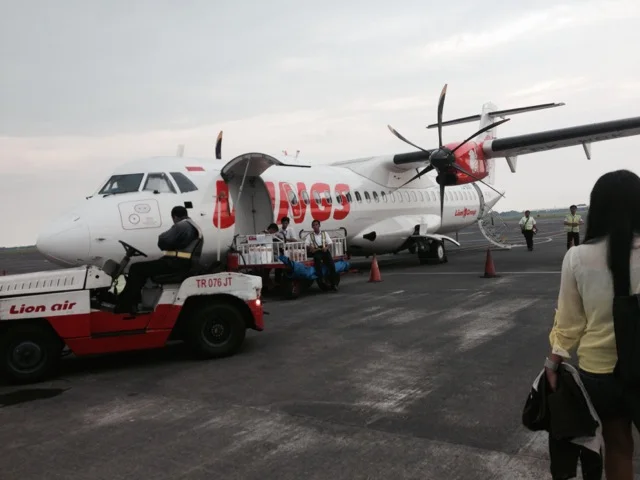Semangat
Medan clinical team
I am proud of the Medan clinical team and I tell them this. “This is really good,” I say, “Ini bagus sekali!”
Eka, Florida and Eli are beaming. Two things are obvious: They don’t get many compliments. They are beginning to see relevance in their work. The latter was my primary reason for coming to Medan, the second most northern province in Sumatera below Ach. After two years, EMAS has not seen a drop in its maternal and newborn mortality rate in the 100+ health facilities it supports. Our promise is 25% over 5 years in the whole country. Uh….
“Tim di provinsi lain akan menjadi malu,” I say, “the other teams are going to be embarrassed.”
“Mereka akan seharusnya menyalinkan Kalian,” I say, “they will have no choice but to copy your work.”
“Pasti, mereka akan merasa kemaluan!”
My last sentence makes Eka, Florida and Eli blush. I am thinking that my transformation of the adjective “malu” or “embarrassed” into the noun “embarrassment” by adding ke- and -an was spontaneous, effective, even masterful.
Eka is the group’s spokesperson. She says in English in a slightly hushed voice, “Uh, Pak Wang, you can not say that.”
“You mean kemaluan?” I ask, “I mean it. You guys are great. Don’t worry, the other province’s embarrassment will not last long.”
“That word does not mean what you think, Pak” says Eka. I am looking up “kemaluan” as Eka speaks. The internet signal on my phone is weak and it takes a few seconds to load the answer I see:
'Kemaluan' – noun
genitals: alat kelamin, kemaluan, aurat
genitalia: alt kelamin, kemaluan, aura
privates: kemaluan
“Oops,” I say, “I guess the other teams won’t be feeling kemaluan. At least they shouldn’t be… “
Eka, Florida and Eli nod, looking down at their feet.
It’s funny how you can run a program for a year only to find the most basic elements missing. I try to spend at least a week a month in the field and though I don’t think it is hard to discover truths as long you look, you still have to locate yourself in the right places and dig. Where was I? In Liberia, the problems were logistical: their was no gas in the County, the road was down, the nurses in the city just went on strike because they haven’t been paid in 3 years. In Indonesia, the problems are organizational. Doctors are in charge but no-where to be found. Hospitals give antibiotics but start with the strongest type. Babies are attached to fancy breathing machines but no one follows up to see if they are getting fed.
Isolation of babies is a health care problem in Indonesia
Eka, Florida and Eli have constructed a performance dashboard. This chart lists the key objectives of the EMAS program alongside all the facilities in their province. Across the first row are EMAS objectives including performance on EMAS standardized assessments, percentage of babies with fever that get antibiotics before transfer to the hospital, number of mothers that die in childbirth, and average weight gain of sick hospitalized newborn babies. Down the first column are Medan’s 10 hospitals and 20 Puskesmas or health centers. The idea is that if the clinical teams can see the province’s performance as a whole, they will be better able to identify hot spots and places of strength. In turn, they will be able to better direct their limited resources and experience first hand their ability to influence facility performance.”
“Eka, you guys never did this before?” I ask, “anda tidak pernah melakukan ini?”
“Ng-ga, dan kita baru digajikan,” says Eka, “we were just hired last month. This is actually Florida’s first day.”
“No excuse!” I say, “Ini alasan!”
Eka, Florida and Eli look scared. In their closely shorn jilbab’s they look so innocent and young. “Saya bercanda,” I say, “I am joking but I am glad that we are starting now.”
Sample clinical dashboard to track facility performance
Performance dashboards are one of the primary interventions of EMAS so it makes sense that we would use them too. The dashboard encourages health care facilities to follow their progress as an institution numerically and relative to targets—like a driver of a fancy health care system. Traditionally health professionals look at their work only through the lens of the patient: what individual comes in, what is his or her diagnosis and treatment, what percentage of the bill they pay. EMAS says, yes do this and do this well, but also understand how the patient population is doing: How many patients were seen over the past three months, how long did they wait, what were most seen for, what percentage of patients received medicines according to standard, how many people died.
“How did Deli Serdang Hospital do giving antenatal corticosteroids to mothers delivering prematurely last quarter?” I ask, “kinerja Deli Serdang terhadap ACS kwarter yang lalu apa?”
The group look to themselves then to the dashboard to locate the information.
“Florida?”
“3 out of 10 or 33%,” says Florida, “rasio tiga per sepulu atau tiga pula tiga persen.”
“Good,” I say, “But how do I know that number is wrong...Begaiman tahu jumla di sini salah?”
“That number is not wrong. I collected it myself,” says Eli, “Jumlah tidak salah. Saya mengumpulkan data data in.”
“Thank you Florida,” I say to Eli.
“I am not Florida,” says Eli
“I know,” I say
“Florida? Final answer I say.”
“Saya tidak tahu,” Florida says, “I don’t know.”
“Eka?” I see that Eka is waiting to pounce. She loves this stuff and this to me in this context makes her lovely. She speaks in her impeccable but careful English, “Because if Deli Serdang had 620 deliveries last quarter and 10% of deliveries result in premature birth, then there should be almost six times the number of women who were eligible to get ACS, not just 10.”
“Tentu!” I exclaim, “exactly. You are a binatang, Eka!”
Thank you Pak Wang, but you just called me an animal. The word is bintang
“Oh, you’re a bintang, Mbak Eka,” I say, “You are a star!”
You don't need to be a doctor to diagnose this baby







